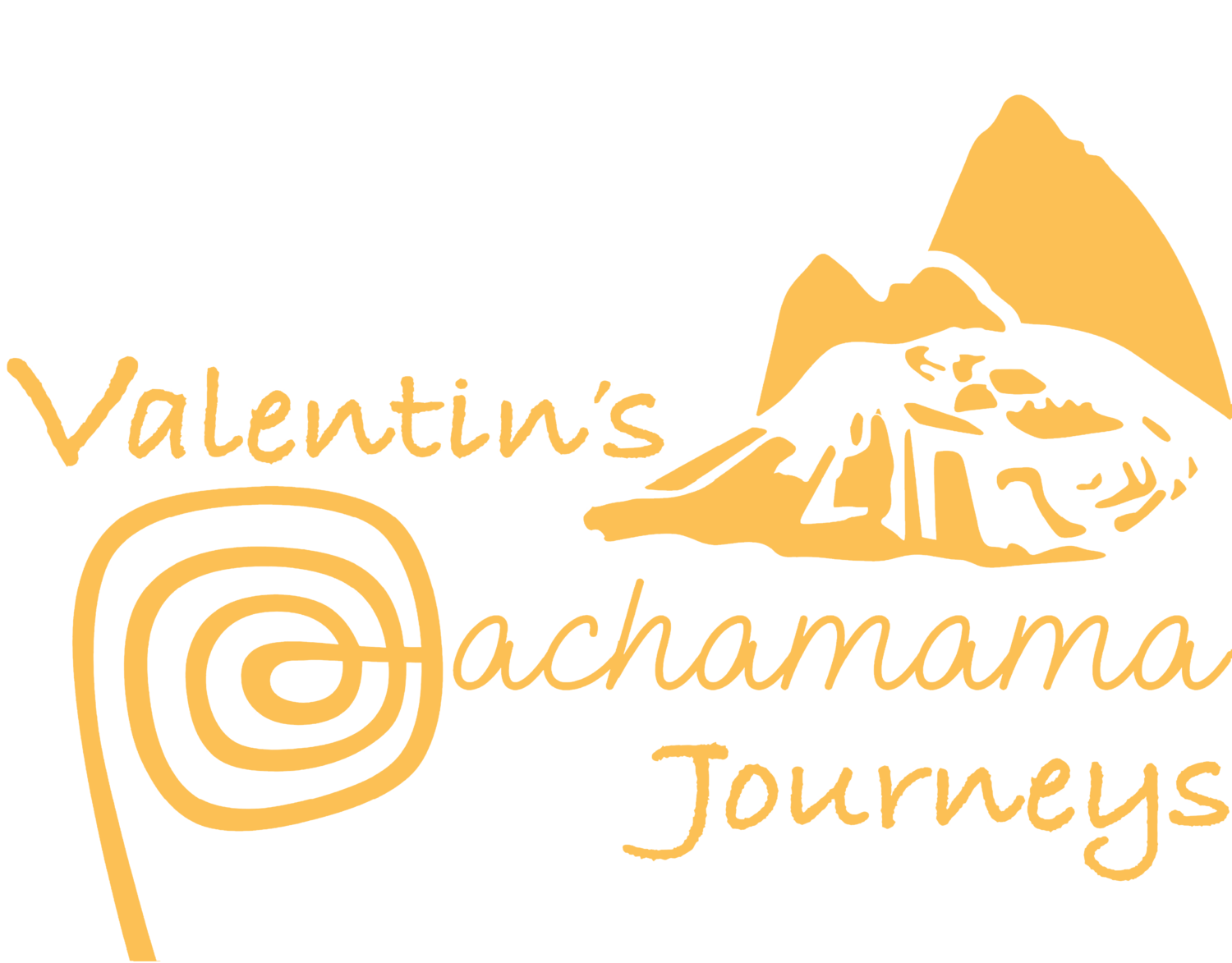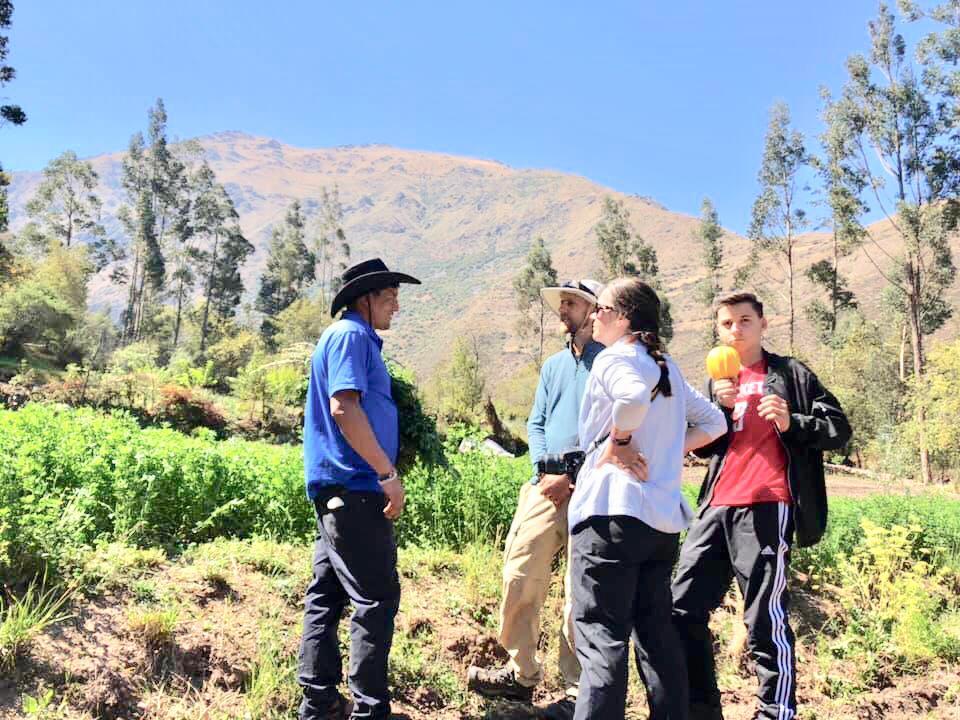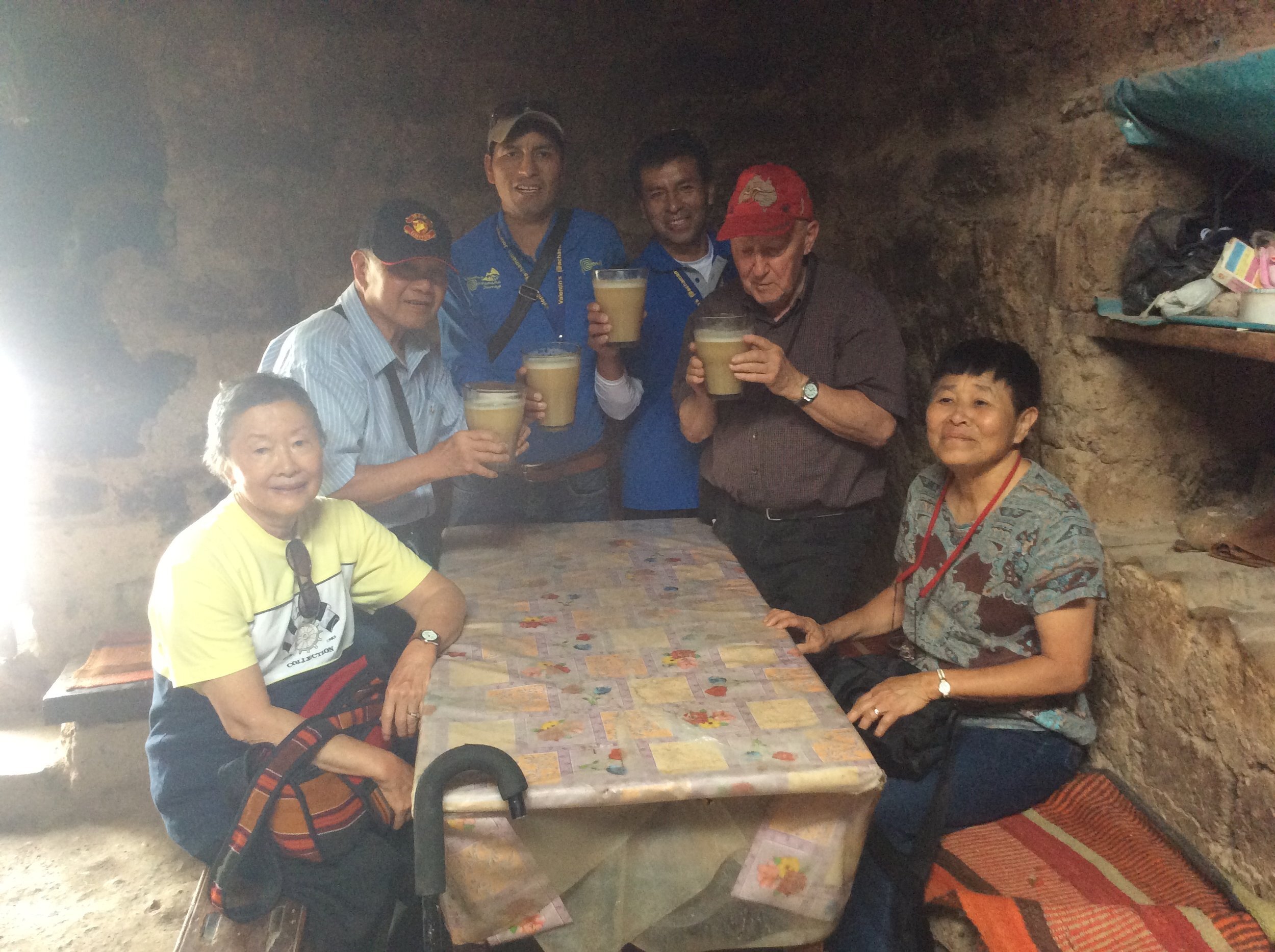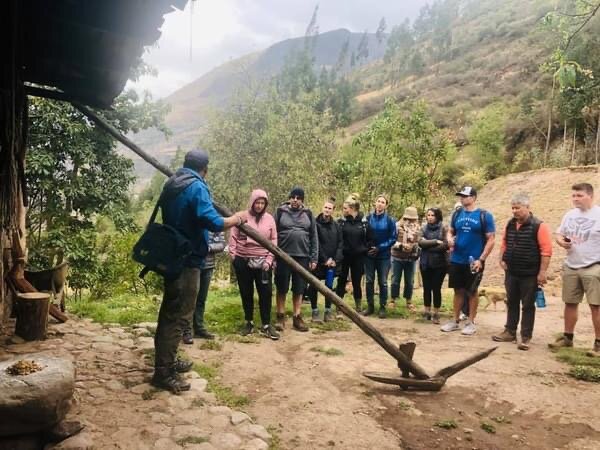Chicha, Sacred Valley & Farm Tour
Full day
Make Chicha in the Sacred Valley
Visit the real Sacred Valley; help out on a farm, see how chicha maize beer is made, and visit the top sights of Ollantaytambo and Pisac.
We show you how locals live and work in the fertile land of the Sacred Valley. There is also the chance to see some of the area’s wonderful produce.
Highlights include:
Help start a batch of chicha
Try the famous Inca maize beer
Ollantaytambo
Sacred Valley farm visit
Visit Pisac ruins and market
Urubamba market
ITINERARY
Sacred Valley: Inca Ruins, Local Market, Farm Tour & Chicha
We pick you up from your hotel (Cusco at 7 am, Ollantaytambo at 8.30 am) There is a 1:30-minute drive through beautiful mountains and then down to the Sacred Valley.
Our first stop is Ollantaytambo, one of the best-preserved Inca towns in all of Peru. Many of the original buildings from the 15th century are still standing. Ollantaytambo was an important town – it was home to the Inca emperor Pachacutec – and was the base for military victories against the Spanish.
Today we explore the exquisite terracing, fountains, aqueducts, and ruins that surround the town. A highlight is Temple Hill with its Sun Temple and the impressive Wall of the Six Monoliths. The Pinkuylluna Inca storehouses are also spectacular.
Visit a Farm in Sacred Valley
We hop into the car and drive 20 minutes to the nearby town of Yanahuara, where we visit a local farm. This gives you the chance to see how local farmers cultivate the land.
You can help to cut the alfalfa used to feed guinea pigs. Guinea pigs are a common site in Peruvian kitchens and gardens. They are often cooked for special occasions, throughout the Andes.
And now for chicha! The Inca maize beer. Your guide will explain the importance of this beer to the Inca Empire, and explain the process of making it. You can help to start a batch of this brew, too.
What is Chicha?
Chicha is a fermented, alcoholic drink found all over the Andes. It is usually made from maize but there are many regional varieties made from quinoa, yucca, and even potato.
The Incas used chicha in ceremonies and rituals and chicha is still drunk on special occasions in modern times. You buy it from Chicherias. These tavern-type places usually offer home-brewed chichi and are often identifiable by a small, red flag outside the building.
How to make Chicha
Chicha is made in pretty much the same way as malted beer. The maize is germinated and the malt sugar extracted. This ‘wort’ is then boiled and fermented for a few days, often in enormous clay vats, stirred occasionally.
Every chicheria has a different process. Some add sugar to aid fermentation; others get people to chew the corn and spit it into the water. Some makers chew the maize and then form small balls of chewed maize which are then dried then used to ferment the chicha.
When ready to serve, the chicha is sieved to get rid of any corn from the liquid.
Most chichas are yellow and the alcoholic content, while not usually strong, can certainly be felt.
For non-drinkers, there is the purple Chicha Morada, non-fermented, and made from purple maize. It’s common to be served with meals in local restaurants.
This will be followed by a private gourmet picnic lunch prepared by our chef. It will feature local organic produce, including some of the farm’s crops. Enjoy a leisurely lunch outside while enjoying splendid views over the Sacred Valley.
Urubamba market
After lunch, we go to the local market in Urubamba. Here we see local families selling things such as fruits, vegetables, flowers, and natural medicinal plants. Your guide shows you the market and you can taste Peruvian fruits and foods such as passion fruit, lucuma, and chirimoya.
Pisac market and ruins
Next up is Pisac – and it’s not just the market to see – there are majestic ruins at Pisac. We see terraced Inca ruins that are situated high on a mountain. From here, we climb to the top of the ruins and take in amazing views of the Sacred Valley. Your guide can explain the religious, astronomical, and military functions of these ruins at Pisac.
After visiting the Inca ruins, there will be a chance to hike on a little-known, seldom used original Inca trail and through a tunnel that was built by the Incas. One of the largest Inca cemeteries is also located in the ruins at Pisac and we can tour this part of the site, too.
We finish the tour with a trip to Pisac handicraft market. Browse ceramics, jewelry, and weaving – great souvenirs. The tour ends with us dropping you off at your hotel in Cusco or the Sacred Valley.
Don’t forget to read our FAQs, covering altitude, money, COVID, and more.
Prices
Minimum 2 people
1 DAY
Groups of 2: $185 per person
Groups of 3-4: $175 per person
Groups of 5-6: $155 per person
Groups up to 7: Contact us for pricing
-INCLUDED-
Private transport, lunch, & Chicha
-NOT INCLUDED-
Gratuities & Boleto touristico required for entrance into Ollantaytambo.
Suggested tours
Gallery
<- BACK
























